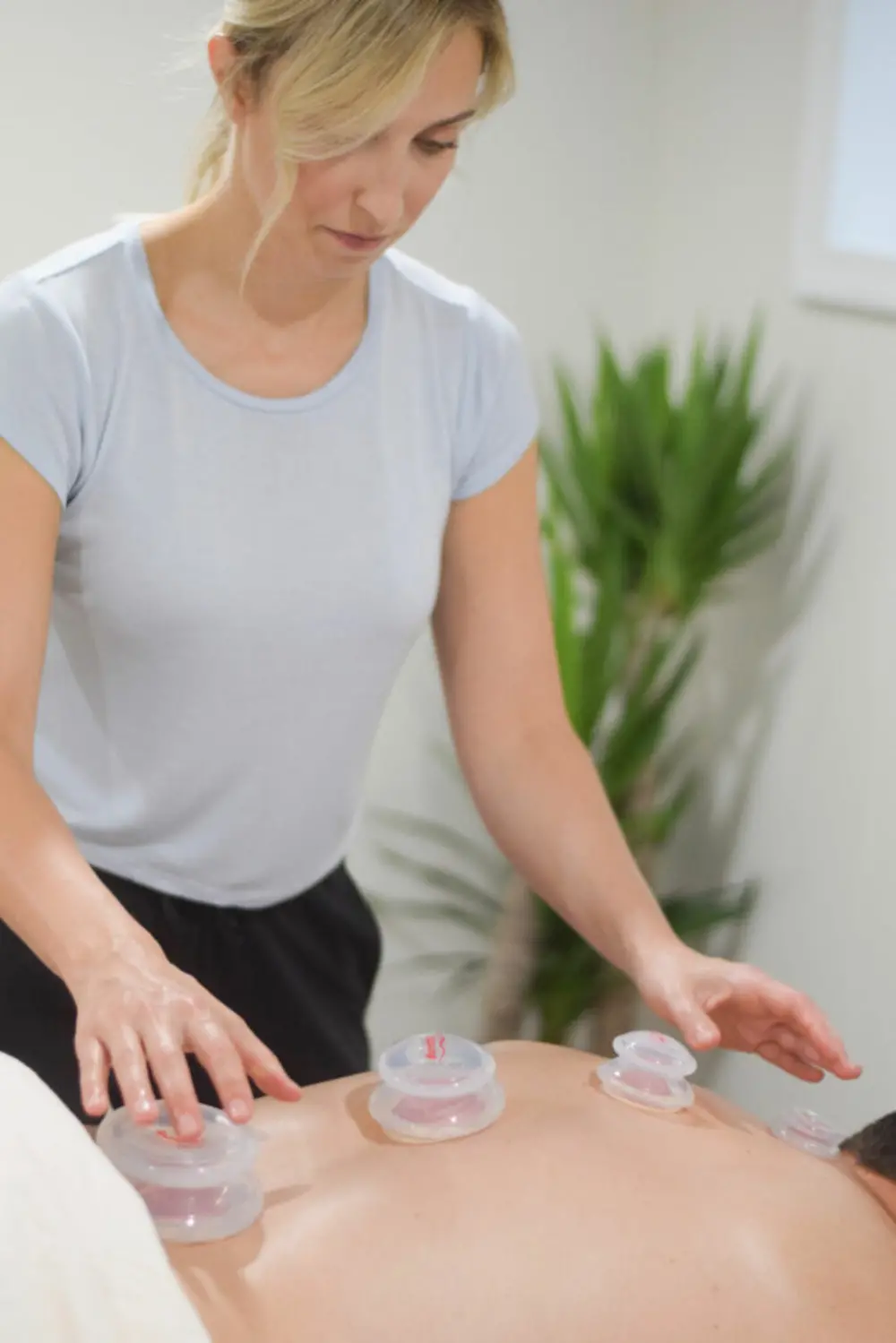
50 – Cupping Therapy with Alexa Dutchak
- Safe Harbour Therapy Centre
Subscribe: Apple Podcasts | Google Podcasts
Cupping therapy is a modality that I sometimes incorporate into my massage therapy treatments. It can be that missing piece of the puzzle that some people need to relieve pain, swelling, inflammation, tension and restricted range of motion, just to name a few!
Cupping therapy helps me as a massage therapist to unstick the most stuck of joints and tissues (in most situations). It is almost exactly how it sounds: therapists use either plastic, silicone or glass cups to suction onto the skin, to grab a connective tissue called, fascia. So…what exactly are the cups doing to the fascia…and what is fascia anyways!?…
We have a layer of superficial fascia that sits on top of all the structures that make up a large muscle fibre as a group; and we also have deep fascia that envelopes each individual muscle fibre. This can explain why our pain can feel so deep and can last so long; we have hundreds of muscle fibres for one muscle.
I like to describe fascia as one big piece of saran wrap covering our muscle connective tissues (and tendons). It helps connect the structures in our body (tendons, muscles, bones, nerves, organs) and give those structures their shape plus it helps with movement in the body as a whole. There is no beginning and end to fascia; this is why pain and range of motion issues can be connected to areas of the body that originate somewhere else.
In a normal healthy and pliable state, the fascia moves, expands and functions without hesitation or restriction. Inevitably we will experience some sort of physical trauma: spraining our ankle, getting into a car accident, sitting at a desk with poor posture for years, or standing in the same spot at a job for years. our fascia is also affected by emotional trauma like going through a breakup, experiencing a loss of family member, or even the small, every day stressors that compound over time.
As a result of these physical and emotional trauma’s, the fascia becomes more tight, restricted and disrupted, and causes tension all over the body.
Chronically tight fascia can cause all sorts of problems from general pain, numbness, headaches, sharp shooting pain to deep achy pain. As a massage therapist, we are working to soothe these disruptions in the tissue so you can live pain free and function day-to-day the best you can.

Cupping therapy helps us release the fascia! When the cups are sitting on top of your skin, by adding a small amount of suction, it creates tension within the diameter of the cup. You may notice a small puffed up look of the skin inside the cup, and a little bit of pink or redness. With the suction of cupping therapy, it’s helping to pull the superficial and deep fascia away from the structures and fibres, to ultimately release the tension and/or adhesions between structures. Not only is the suction of cupping therapy telling the fascia to relax, but it’s bringing more and new blood flow to the surface which helps with the healing process.
Cupping can also help improve lymphatic fluid flow which is important for our immune system, as it acts as a filter. When I am massaging I am definitely working the superficial fascia of the body; you can’t avoid it. But the cupping therapy gives your fascia that extra gentle push, and it can reach the deep fascia.
So what does the process actually feel like? When you come to see me, I like to let the cups sit still first, until the individual client feels the tension under the cups decrease: this can happen quickly, or it take a few minutes. Then I gently pull or push on the cups to create a stretch in the line of pull the cups creates. If the fascia has really let go, then gently dragging the cups creates a more gentle skin rolling effect and that can feel amazing!
Not every massage therapy session requires cupping therapy, but it is a nice addition to your treatment plan, if you require it. Come and see why I love it so much!
You can schedule an appointment with me by clicking here
You can also follow Alexa on Instagram @dynamicwellnesswpg_rmt
